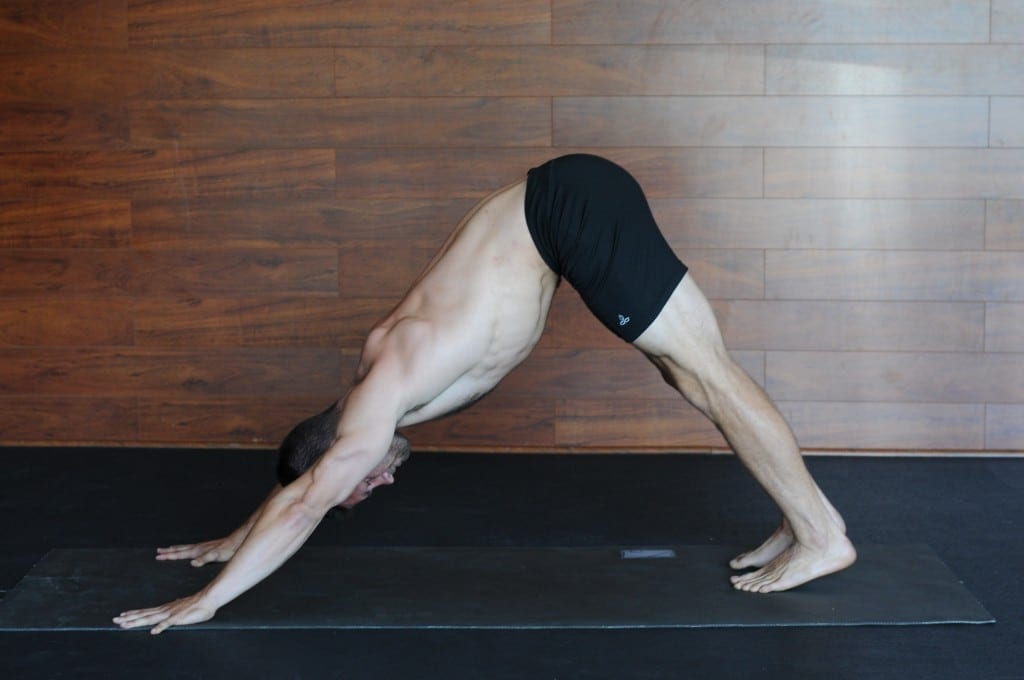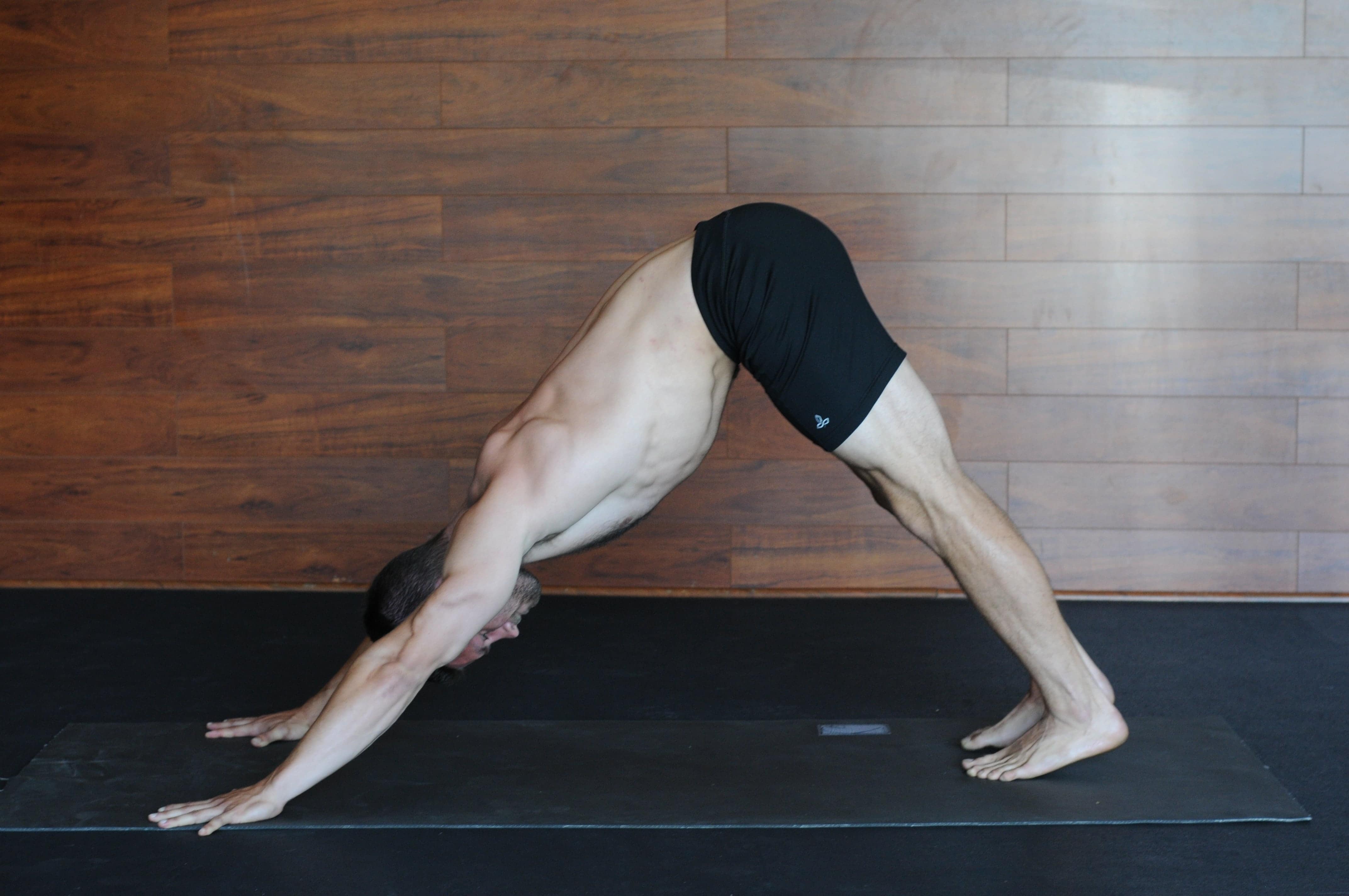Something that I’ve been fascinated with over the last year is shoulder repair. What all goes into it? How many different disciplines of physical fitness do you need to bring into your fitness regimen in order to be effective? I began to put all of my knowledge of shoulder health together last month, and am in the process of finalizing the content for a shoulder rehabilitation project that I’m working on. Here’s my story of fixing my shoulders, and 5 things that I learned and practiced regularly in order to heal my shoulders after years of lifting and collegiate sports.
My shoulders were in bad shape. Even though I didn’t realize it at the time, years of lifting with poor form, a lack of flexibility training, a lack of understanding of basic shoulder anatomy, and a desire to push myself beyond my limits had me on a path to physical limitations by the time I would be 30 years old. The problem started when I was about 21, with a sharp pinch in my shoulder every time I put a shirt on. I asked friends and family what to do about it. They said that it was a rotator cuff injury, and that it would just go away if I backed off for a couple of weeks. As a testosterone-driven 21 year old, “backing off for a couple weeks” was simply something I didn’t do. Secondly, how would a brief period of inactivity help cure the issue that had caused the pinching in the first place. The issue, I later learned, was due to limited range of motion and poor mechanics. I was overusing one muscle in a way that I wasn’t supposed to, and leaving other muscles completely out of the equation. I didn’t know what to do. Yoga wasn’t even something that I had considered doing. Eventually, I just stopped doing motions that hurt too much, and pushed through the exercises that were tolerable.
When I was a senior at the University of Wisconsin, I started doing yoga. After a few months of this revolutionary exercise, I thought that surely my shoulders would be cured. To my amazement, the problem persisted. Instead of addressing the problem, I just stopped doing the vinyasa movement so integral to a power yoga class (the high plank to low plank to upward facing dog transition) so as to avoid stressing my shoulders too much. I would go back to that vinyasa movement after a couple weeks of leaving them alone, only to have the issue flare back up again later that month. What was I doing wrong? I didn’t understand.
Around November of 2013, the problem reached a crescendo. At that time, I was teaching about 10 – 12 classes a week, and I was participating in every class that I taught. Every. Class. That meant that I was working out about 3-4 hours a day. In addition, I was still working part-time for a moving company, which meant that I was actually working out for something like 8 – 12 hours daily. I was putting my body through a tremendous amount of stress, and even though it was “just yoga”, my body was beginning to really feel it. I decided it was time to do something. I started working with a personal trainer, and he started teaching me about real mobility, and helped me to reveal just where the imbalances were in my body. That inspired me to do my own research and my own experimentation in order to begin to repair my shoulders. After a few months of research, I finally began to understand what all went into healthy shoulders, and now I’ll explain a few of the main things that I learned from that.
Lesson #1 – Traditional yoga is not enough. Yoga involves a lot of pushing exercises, but lacks pulling exercises. This inequality of pushing and pulling exercises contributed to muscle imbalances that were causing the pain in my shoulders. Even though my my pushing muscles were strong, my pulling muscles were, in comparison, very weak. Doing planks for 20 minutes a day and then neglecting to counter it with any rows was probably a big reason for that.
Lesson #2 – Proper shoulder placement comes first. I learned that a huge contributing factor to my shoulder issues was from poor bodily mechanics in every form of physical fitness that I did. I realized that my shoulders were completely out of place. Shoulders aren’t meant to be in front of your chest. They’re supposed to frame your chest. Shoulders shouldn’t be shrugged. They should be relaxed, down and away from your ears. For most of us, countering this improper shoulder placement meanings pulling your shoulders down and back, so that you feel the tops of your shoulders and the very upper region of your chest muscles begin to stretch. The point is that you should make sure that your shoulders are where they’re supposed to be before lifting, pushing, or pulling something.
Lesson #3 – In yoga, your lower body stretches because it has to. Your upper body stretches only if you want it to. What I mean by this is that your lower body will stretch more than your upper body because it has to support the full weight of your body. When doing a Warrior 2 pose, for instance, your hip flexors will stretch because the weight of your body is causing them to engage and lengthen. Your upper body, however, is only fighting against the force of gravity on your arms, which isn’t much. Therefore, you have to focus more on engaging the muscles in your upper body in order to get an equal benefit.
Lesson #4 – Deep tissue massage / soft tissue manipulation. You may think that as long as you work on the flexibility in your shoulders through stretching that you can eventually get your shoulders back to healthy. If only it were that simple. There’s more to it. Deep tissue massage is essential for breaking up the knotted muscle that stretching alone will not be able to help. Stretching a knot would be like trying to cut through wood with a plastic knife. Eventually, it might work, but you could just use the saw instead. Deep tissue massage is a tool that you’ll need to start using in order to fix your shoulders.
Lesson #5 – Distraction. Distraction is another tool, similar to deep tissue massage, that you’ll need to help repair your shoulders. Repeated use of poor movement mechanics in your shoulders can lead to the wearing away of cartilage, which serves as a buffer zone that prevents the bones of your shoulders from rubbing against one another. The wearing away of cartilage can lead to uncomfortable or painful “clicking” or “popping” in your shoulders when you make simple movements like arm circles or lifting your arms overhead. Distraction helps address this issue by creating more space in the shoulder joint to reduce the grinding of bones on one another.
Check out this blog I’ve already written on yoga for shoulders, 5 Poses that will Fix Your Shoulders.
So there are 5 lessons from my journey into shoulder rehab world. This will eventually be part of the shoulder project that I’m working on (yet to be titled) that combines multiple disciplines of physical fitness into two yoga-centric workouts (one longer and one shorter) that people can use to fix their shoulders. It will also basic shoulder anatomy explained as simply as possible, common shoulder problems, tests that help you measure your level of shoulder flexibility, and a guide of exercises to address them, which includes yoga poses, stretches used by handstand enthusiasts, physical therapy, soft tissue manipulation techniques, distraction, and more.
Take care,
Dean


Great info, Dean! Like you, while I was in my 20′ and early 30’s, I worked out hard with a lot of not-so-great form. I tore my right rotator cuff doing military presses which really hampered a lot of what I did. Six or seven years later, I had it surgically repaired and headed back to the gym full steam ahead. A few weeks later, I friggin’ re-tore it. A couple years later, I my flip-flops caught a stair causing me to fall and tear the left shoulder. UGH After ten depressed and inactive years later (what are you going to do with 2 torn shoulders and bad knees?), I turned to yoga because I needed to repair myself. Through yoga, Healthy Shoulder Handbook by Dr. Karl Knopf, deep tissue massage and mindful shoulder placement I have more range of motion and a lot less pain in my shoulders than in my 20’s (I’m now 52).
I’m really looking forward to what else you discover. Great blog and videos, btw. Cheers
Great story, Jeff! Sounds like a few tough years. Thank you for sharing.
Thank you Dean. This will be excellent for me as a long-time shoulder problem person. Impingement has been my big problem and I did have one shoulder repaired after my acromion process cut through a shoulder muscle while I was taking scuba tanks off a boat in Mexico. It was a situation that was a longtime in the making. Still, shoulder flexibility is something i need to always work on.Even with all of the Kelly Starrett Lacrosse ball massage, etc. I still need work–like maybe several PT torture sessions. I look forward to your program.
I just started discovered your programs after being turned off by the breathy, low information content DVDs I tried for yoga. I didn’t get how instructions like “reach up to the sun and be a tall mountain” translated to how I could properly position my body in the poses to get the benefits. Your straightforward technique with the excellent position explanations are so far beyond what I had run into before. I have not gone to local yoga studios because, well they seemed weird and just not for me. I am excited about using your programs.
Thanks.
That’s exactly why I started Man Flow Yoga. I didn’t want to be a tall mountain. I wanted proper shoulder range of motion. You’re in the right place, James. Stick around. 🙂
Very happy to have discovered you on Twitter Dean! Great article, I’m looking forward to reading more of your work and trying some of your training. I just turned 52 and I’ve had a year from Hell with shoulder impingements, cervical disc herniation, and even tossed in some strained piriformis for some friggin’ amazing sciatic nerve pain! And its all due to old school bodybuilding and heavy lifting in my 20s and 30s and now too much sitting around trying to recover, Its a shit show bro! Along with launching my blog about reinvention, I’m going to have to reinvent my training! looking forward to learning more.
thanks man!
Thanks a lot.